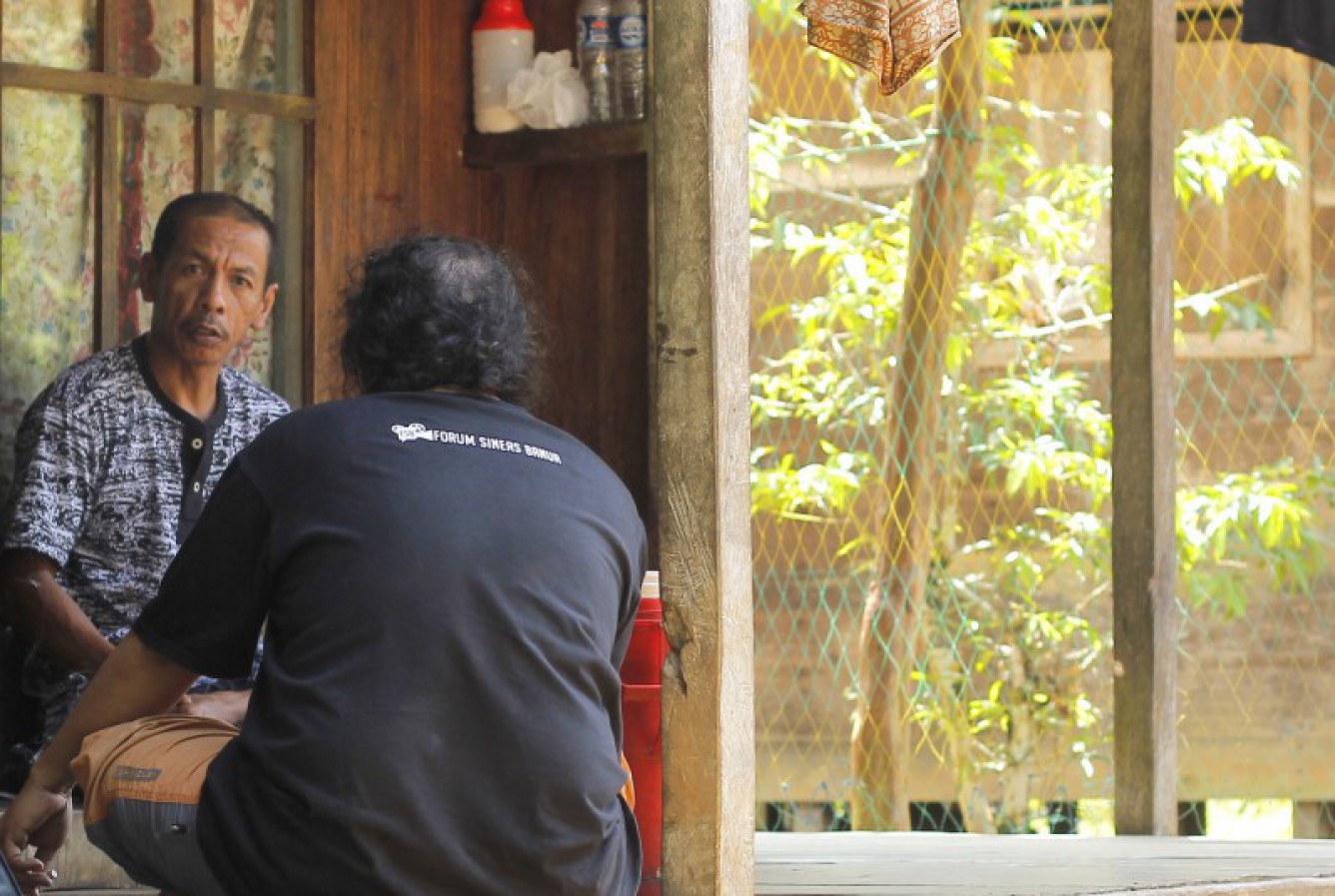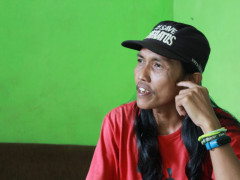Rupiah Collecting Firebreak
By Aries MunandarUplands Blamed for the Fires in Lowlands

Same treatment to farming communities regardless of customary rules is the trigger for unequal law enforcement related to the prohibition of land burning. Indigenous people who live in the mountains burn land for agricultural purposes within strict customary rules with clear and firm sanctions, but they are often blamed for the fires that occur in the lowlands.
"Fortunately, it is now the rainy season. We are no longer anxious. We have burned the land in preparation for planting rice several months ago. Now we are going to plant the seeds and continue with the farming steps we usually do. At each stage we hold a ceremony to ask for God’s permission and pray for safety and successful harvest,” said Parlihan, secretary of the Pitap Dayak Customary Institution, Balangan District, South Kalimantan.
Parlihan understandably felt relieved. The rain, which is now pouring evenly in almost all areas of South Kalimantan, has prevented the smog caused by forest and land fires. A few months ago during the peak of the dry season, forest and land fires that occurred in some areas, such as around Syamsuddin Noor Airport in Banjarbaru City, were quite worrying. The smog came from peatlands in Guntung Damar, which is not far from the airport, and often interfered with flight activities. Forest and land fires also occurred in several districts in South Kalimantan, such as Hulu Sungai Utara, Banjar, Barito Kuala, Hulu Sungai Selatan, and Tanah Laut.
Although most forest and land fires occur on peatlands located in the lowlands of South Kalimantan, people who live in the uplands are also blamed for deliberately burning the land. In several cases, indigenous peoples were arrested because they were accused of burning land and causing smog. They actually burn their own land and on a very small scale, especially when compared to the scale of fires caused by land clearing activities that are commonly carried out by large-scale plantation companies in various regions.
This has made Parlihan and most of the Dayak communities in the Meratus Mountains in South Kalimantan worried. In the traditions and customs of the Meratus Dayak community, the clearing of agricultural land is carried out by manyalukut, the local term for burning land on a limited scale based on customary rules and regulations.
“Burning land in the mountains is very different from what they do in the lowlands. There is no peatland here. We only have mountain land. But when there is smog caused by burning peatlands, people in the mountains are also get blamed,” said Parlihan.
In general, Dayak people in the Meratus Mountains develop an agricultural system that is adapted to the nature of their surroundings. Since they live in the mountains, they cultivate farm crops. To cultivate the relatively dry but nutrient-rich soil, the Meratus Dayak people clear the land by burning. Then in the next stage, they sow seeds, weed the land regularly, and protect the growing rice from attacks by animals such as monkeys, pig-tailed macaques, and wild boars. Between every stage, they hold a ritual or aruh in the local language. The rituals end after they put the rice in the upak or granary.
According to the Pitap Dayak Chief, Ali Udar, this agricultural system developed by the Meratus Dayak people is often misunderstood by the outsiders who blame the Dayak community for the smog because Dayak people clear land by burning. They also accuse the Meratus Dayak’s shifting cultivation system of causing forest degradation.
Ali Udar has asked various parties to stop blaming the shifting cultivation system of the Meratus Dayak community.
“We are not moving at will. There is a ritual and period for moving our plots. Usually, we will return to where we first cleared the land after seven to 15 years. Therefore, this is not shifting cultivation. It is rotational cultivation. We go back to where we clear the land according to a certain calculation," he said.
By law, land clearing by burning has been prohibited by the government. However, there is an exception to this policy to protect the local wisdom regarding land clearing.
According to Law No. 32/2009 on Environmental Protection and Management article 69 paragraph 1 letter h, everyone is prohibited from clearing land by burning. This article is accompanied by threats of criminal penalties and imprisonment which inevitably become a terror for farmers in various areas in South Kalimantan. However, paragraph 2 of the same article stipulates that "The provision as referred to in paragraph 1 letter h pays serious attention to local wisdom in the respective regions."
The protection of local wisdom is also stated in the Regulation of the Minister of Environment No. 10/2010 concerning Environmental Pollution and Damage Prevention Mechanism. Article 4 paragraphs 1 and 2 of this Ministerial Regulation allow indigenous peoples to burn land under certain conditions, including the obligation to notify the village head for burning a maximum of 2 hectares of land per household for planting local varieties. The village head then conveys this to the district/city environment office. Another condition is that the granting of a land burning permit is not allowed during below normal rainfall, long dry season, and dry climate periods.
Based on the law and regulation, it is clear that there is an exception for burning land to be used as agricultural land for indigenous peoples, which of course is implemented under certain conditions. The South Kalimantan government believes that land burning is one of the causes of the smog, but the dissemination of the relevant regulations is not balanced. They emphasized the sanctions, prohibitions, and threats rather than providing more space for the indigenous peoples.



